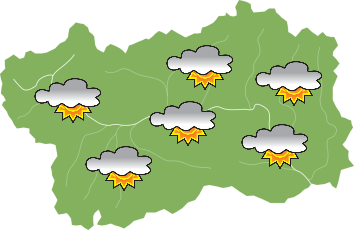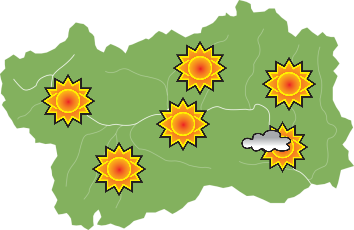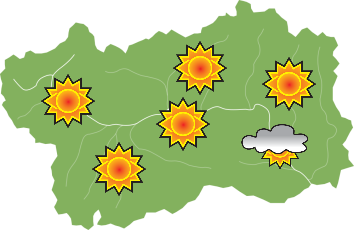Built by the Benedictines in the XI century in Romanesque style, the church was subject to multiple architectures one over the another, but also some significant modern restoration (1968 - 1972).
It is located on the structures of a Roman building, brought to light during recent restoration and which dates back to 300-400 A.D. It could have been a huge Patrician villa or a public building; it has a dual heating system using air blown under the floor, which was used to heat the “calidarium”.
The archaeological site under the church is accessible by reservation only.
Inside, there is a huge, clear contrast between the sobriety of the environment and the wealth of decorative paintings in the absidal area. The nave is divided into a succession of alternating columns in square, circular and polygonal shapes.
The church was originally without vaults (they date from 1696) and the current, large windows. The roof was held up by visible beams or the coffered ceiling and light used to pass discretely through the high, narrow, vaulted windows that are double recessed. The groin vaulted arch that overhangs the altar is fake, although rather old. The triumphant arch, probably in the XIII century, restricted the absidal area due to its framework and considerably reduced the area of the underneath crypt, a mystical with three small naves, each with three arches whose small, stone columns support capitals dating from the VIII century.
The oldest frescoes in the church are those in the north absidioles, by Iacopo Jacquerio (or his school), dated 1416. Also in the XV century Giacomino of Ivrea painted the triumphant arch with a cycle of doctors of the church, saints and prophets. Decorations were added over these paintings, which were dull and plastered, by Filippo da Varallo towards the end of the XVI century and are still visible today (partly, thanks to restorations in the Seventies), once covering the entire presbytery basin.
Christ on the Cross in the presbytery is a bronze work of art by Luciano Minguzzi.
With the new museum layout, the visitor is guided through a path to discover the symbolic places of local religiosity, such as the parish church and the numerous village chapels, from which the art objects on display come from, witnesses of faith and local popular devotion.
You can admire wooden sculptures and other works of art ranging from the fifteenth to the eighteenth century, such as the splendid goldsmiths.










